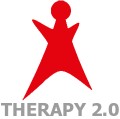Meetings on the web: the needs of Slovenian youth and online counseling
Integra
Publication based on the award-winning online advice program "It's Me" funded by the Ministry of Health. It summarizes the findings and offers explanations that have been obtained in the programme and gives valuable opportunity to hear the voice of young people about the essential issues they are facing in today's society. Their thinking, feeling, attitudes and opinions are also a reflection how successful the program pursued their actual needs and interests.
LessPublication based on the award-winning online advice program "It's Me" funded by the Ministry of Health. It summarizes the findings and offers explanations that have been obtained in the programme and gives valuable opportunity to hear the voice of young people about the essential issues they are facing in today's society. Their thinking, feeling, attitudes and opinions are also a reflection how successful the program pursued their actual needs and interests.
Publication based on the award-winning online advice program "It's Me" funded by the Ministry of Health. It summarizes the findings and offers explanations that have been obtained in the programme and gives valuable opportunity to hear the voice of young people about the essential issues they are facing in today's society. Their thinking, feeling, attitudes and opinions are also a reflection how successful the program pursued their actual needs and interests.
- Target Groups
- Therapists
- Health Professionals
- Topics
- General
- Type of Best Practice
- Book
- Country
- Slovenia
Description
Findings in book based on a number of surveys and thirteen-year experience of planned, responsible and professional web-based activity. The book was created at the National Institute of Public Health in a new organization set up in 2014; the origin and the life of the program fall within the framework of the former Health Care Institute of Celje, one of the nine regional public health institutions in Slovenia. An example of good practice from Celje has made full use of the potential of national cross-sectoral, inter-institutional and human integration, facilitated by interconnection online.
The first section presents the development of today's largest youth online counseling center in Slovenia - www.tosemjaz.net - and explains how experts have established a functioning model of preventive, informative and counseling work with young people online. Authors describe the public health approach to the vulnerable population group of young people - from recognizing current issues, understanding their actual needs, identifying activities and indicate the implementation of the program in the school environment, and highlight the mechanism of functioning of the online counseling center as a complementary support during nursing. Another highlight is connected with online advisory network, based on the voluntary involvement of experts of various specialties. Through the development of an effective model of online counseling, good practice to various supportive environments and organizations can be transferred.
In the second chapter, authors summarize the research resources and methods on the basis of which the book was created. They also describe the characteristics of online counseling, counselors and their views on adolescents online. The third chapter provides an overview of the extensive biennial analysis of nearly 6,000 online youth questions and information requests in the online counseling. In the thirteen years, a unique online database was created with approximately 33,000 questions of adolescents and adolescents about the problems and dilemmas of grow.The fourth chapter follows an outline of the features of online counseling. Authors are referring to the experience and knowledge of online counseling practitioners: they write how the web works as a counseling tool in order to enable careful, responsible, safe and credible informative and cognitive communication with young people and draw attention to the advantages, disadvantages and specificities typical of computer-mediated communication. They focus on language characteristics and the power of verbal communication.
In the fifth chapter authors face two images: adolescents and counselors. They are interested, what roles adolescents take online, what they are asking about and what they expect from a web consultant. At the forefront of the counsellours is their knowledge, the motives for the online advisory work and the way they work. Authors are interested in their preparation, understanding of the responsibilities and professional competencies. Here are also highlighted possible professional dilemmas and commitment to ethical principles.

Original language
Slovenian
Country
Slovenia
Calendar
Announcements
- - No existing announcements -

